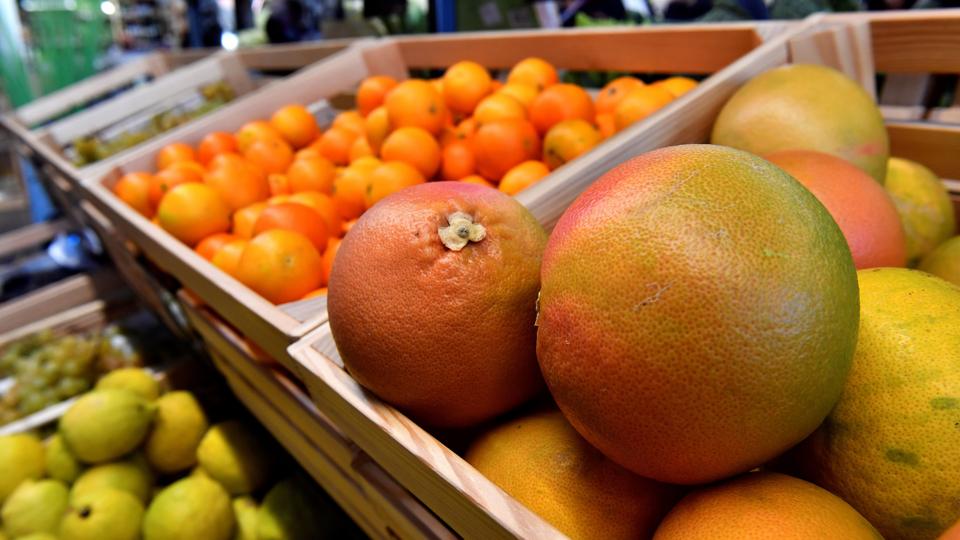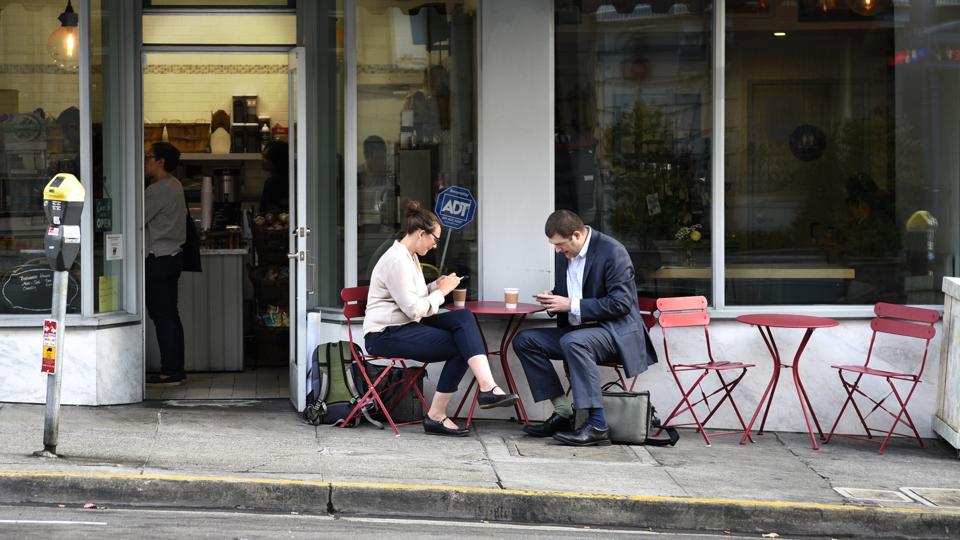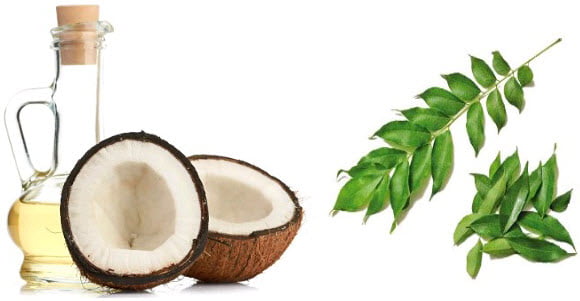laboratory somewhere in the University of Queensland is storing some unusual specimens: the human waste of more than one-fifth of the Australian population.
The samples, collected from wastewater treatment plants across the country, frozen and mailed to researchers at the university, have been described as a treasure trove of insight into the dietary and drug habits of different communities. And the key to getting them all collected? “Asking very nicely,” says research fellow Jake O’Brien.
O’Brien and PHD candidate Phil Choi took those samples, collected during Australia’s last national census in 2016, and, in the first peer-reviewed study of its kind, analysed the wastewater of communities around Australia to measure different diet and lifestyle habits.
They found that in higher socioeconomic areas, consumption of fibre, citrus and caffeine was greater. In lower socioeconomic areas, prescription drugs were in significant use. In short, the researchers found, the richer the community, the more healthy its diet. And all this information came encoded in that community’s human waste.

The researchers collected samples from wastewater plants all over the country (Credit: Alamy)
Consumption snapshot
The study tried to put into practice what other researchers have for some time theorised was possible: that one might get a reliable insight into food and drug consumption of a community on average through its wastewater.
Choi and O’Brien argue that with this method, research teams can get almost real-time indications of changes to lifestyle habits which could help inform public health policy and messaging.
Unearthing information about communities by examining their wastewater is called wastewater epidemiology. The practice has been around for about two decades, and is used in Europe, North America and elsewhere predominantly to monitor illicit drug use in populations. There have been studies which have tested for legal drug use, such as nicotine, and some research teams have been looking into its use in early detection of disease outbreaks, but testing for markers of diet has until now been largely theoretical.
While surveys are already used to find out about dietary and legal drug consumption, wastewater analysis may be a more objective measure of average use within a particular catchment area.
People over-report consumption of healthy foods and under-report consumption of things like snacks – Phil Choi
Choi says that, when surveyed about things like drug use or what foods they eat, people sometimes report healthier habits than they actually have. “You generally find in surveys that people over-report consumption of healthy foods and under-report consumption of things like snacks,” says Choi.
Wastewater analysis can be useful in two key ways, says O’Brien. The first is in identifying disparities between communities, and the second is in tracking changes in those communities over time. “If you’re going to try to implement something hoping for positive change, you need to be able to measure the success of those interventions,” he says.
The caffeine correlation
Finding precisely what they could test for was the initial challenge. Wastewater is, after all, not just urine and faeces, but often personal care products, food scraps and industrial or commercial waste. The researchers had to find particular biomarkers related to specific foods which were only, or predominantly, produced by human excretion.
The study used two biomarkers associated with fibre consumption – ingested when eating plants and grains – and one related to eating citrus. Both fibre and citrus consumption are considered hallmarks of a healthy diet.

Citrus was yet another common finding in richer people’s waste (Credit: Getty Images)
In all of these, communities with the highest indicators of social and economic advantage had strong correlations with high rates of consumption. In other words, broadly speaking the wealthier areas were found to have more fibre- and citrus-rich diets.
Caffeine intake was also found to be greatest among higher socioeconomic groups, specifically in areas designated as high rent, which was backed with other studies which found espresso and ground coffee drinks were most frequently consumed by those with a bachelor’s degree or higher. The report’s authors suggest that this is both a factor of having the financial ability to fork out for a daily coffee or two and a culture of coffee consumption among wealthier Australians.
On the other end of the socioeconomic spectrum, in particular the drugs tramadol (an opioid-based pain killer), atenolol (blood pressure medicine) and pregabalin (anti-seizure medicine) were most highly associated with poorer communities – however the latter two were also shown to be more present among older populations, which can also tend to be lower income. Other forms of painkillers, medicines and antidepressants were found to be linked to areas of greater disadvantage, but not to the same extent.
Choi says comparing rich and poor catchment areas directly can be startling. “Just looking at the figures we can see – with one community compared to another – a several-fold difference in the markers of fibre,” he says.
The researchers hope to repeat the survey at the next census, that way providing insight into whether any changes may be underway that other research methods may not yet have uncovered, or may need to be used to investigate further.
For instance, in this study antiobiotic use is fairly uniformly distributed across different socioeconomic groups, indicating the government-subsidised health care system is doing its job; should this distribution start to shift in future surveys, it may prompt further research into whether and why certain groups may be accessing such medicines less

Caffeine was found in the wastewater of those Australians living in neighbourhoods with higher rents (Credit: Getty Images)
In all of these, communities with the highest indicators of social and economic advantage had strong correlations with high rates of consumption. In other words, broadly speaking the wealthier areas were found to have more fibre- and citrus-rich diets.
Caffeine intake was also found to be greatest among higher socioeconomic groups, specifically in areas designated as high rent, which was backed with other studies which found espresso and ground coffee drinks were most frequently consumed by those with a bachelor’s degree or higher. The report’s authors suggest that this is both a factor of having the financial ability to fork out for a daily coffee or two and a culture of coffee consumption among wealthier Australians.
‘Finger on the pulse’
The study confirms a global phenomenon known as the social gradient of health, which reflects that factors associated with good health – like smoking rates and levels of obesity – improve alongside one’s socioeconomic status.
While Australians have a self-belief that the country is egalitarian, socioeconomic inequality, as indicated in the wastewater report, is a serious issue. A 2018 report found that Australia had higher than OECD average levels of income inequality, although it ranks as a more equal society than the UK and USA. An Australian in the top 20% of income has five times as much disposable income as someone living in the bottom quintile. And, generally speaking, more money means a greater ability to afford perishable foods such as fruit and vegetables, while more education means a greater understanding of nutrition.
The study found one significant exception to the class and diet relationship: areas with a high proportion of non-English speaking households also reported relatively high rates of fibre and citrus consumption
The study found one significant exception to the class and diet relationship, however: areas with a high proportion of non-English speaking households also reported relatively high rates of fibre and citrus consumption, despite lower socioeconomic ranking, reflecting the often high vegetable content of traditional diets in migrant communities.
Professor Catherine Bennett, chair of epidemiology at Deakin University in Victoria, says that the Queensland study is interesting in pushing wastewater epidemiology to the next level, and coinciding it with the census allowed for a certainty regarding the demographics of different catchment areas. The researchers have been upfront about its limitations, she says.
We always have to be a little cautious when looking at these ecological studies because it’s association in the broadest sense, you can’t argue causation – Catherine Bennett
“All that being said, this is what we call an ecological study in epidemiology. The term means that we’re not using individual data, but collective data,” she says. She says that such studies have been used to detect decreases in nicotine in wastewater following the introduction of plain packaging for cigarettes in Australia. “What you don’t know is whether the smokers are all smoking less, or whether there’s less smokers in the community. We always have to be a little cautious when looking at these ecological studies because it’s association in the broadest sense, you can’t argue causation.”
However, the nicotine studies, just like the recent diet and drug study, have been validated by comparison to other research, suggesting that wastewater epidemiology is a broadly accurate – if non-specific – way of monitoring population health and habits.
“It’s a really interesting opportunity, as long as we don’t try to over-interpret the data,” says Bennett. Once the data has been validated, she says: “It is a useful way to keep your finger on the pulse of what’s going on at the population level.”
[“source=bbc”]























